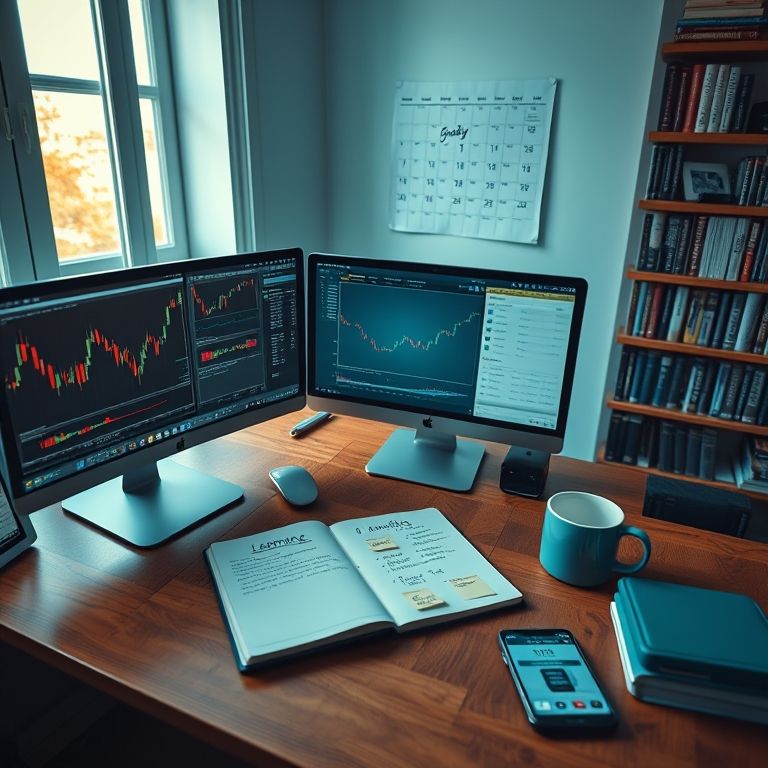how long to learn trading
How Long to Learn Trading
Introduction
If you’re eyeing the markets but unsure how long it takes to get competent, you’re not alone. A lot of traders start with a rough timetable and end up revising it as they gain experience—because learning trading is less a sprint and more a disciplined craft. I’ve jogged through that curve myself: juggling a day job, a stream of price charts, and a notebook full of “what if” scenarios. The short truth: you’ll shave years off the learning curve with the right plan, practical testing, and steady risk habits. The longer truth: mastery is ongoing, shaped by technology, markets, and your own goals.

The learning timeline: realistic milestones
- Foundational knowledge and setup (a few weeks to a couple of months). You’ll learn price action basics, order types, and how to use a charting tool. The goal isn’t to predict every move, but to read markets and manage risk consistently.
- Practice and strategy development (6–12 months). Start with a demo account, then move to small live trades. Build and test several approaches—trend-following, mean reversion, or structured risk controls—and see what fits your temperament.
- Refinement and specialization (1–2+ years). You’ll begin to layer asset classes, optimize position sizing, and tune emotional discipline. Expect that new tools, like AI signals or on-chain data, will push you to adapt.
- Ongoing learning. Markets evolve, and so should you. The best traders set quarterly review rituals, document outcomes, and adjust plans without chasing every new gimmick.
Asset classes and what they teach you
- Forex: Deepens understanding of macro drivers, currency correlations, and liquidity rhythms. It trains you to think in pairs, not absolutes, and to respect spreads and rollover costs.
- Stocks: Teaches fundamentals, earnings narratives, and valuation context. You learn to separate the story from the numbers and to align trades with longer-term themes.
- Crypto: Walks you through 24/7 volatility, custody choices, and on-chain signals. It highlights risk management in fast-moving environments and the importance of secure storage.
- Indices: Offers diversified exposure with less individual-stock idiosyncrasy. Great for testing broad-market ideas and improving risk budgeting.
- Options: Forces you to account for time, volatility, and probability. It’s a sharp tutor on risk-reward and the consequences of leverage when mismanaged.
- Commodities: Brings seasonality and geopolitical risk into focus. You learn how supply shocks and demand cycles shape price patterns.
Tools, leverage, and safety
- Charting and data: A robust setup with backtesting helps you separate hype from evidence. Track trade ideas, outcomes, and the assumptions behind each decision.
- Leverage and risk control: Treat leverage as a tool, not a thrill. A practical rule is to risk only a small percentage of your capital per trade and to set stop-loss and take-profit levels that force a calm plan, even when the market roars.
- Reliability and routines: Build a daily routine that includes scanning markets, reviewing trades, and updating your process. Consistency beats brilliance when markets test you.
Web3, DeFi, and the road ahead
- Decentralized finance promises faster settlement, programmable rules, and open access. Yet it brings custody challenges, smart-contract risk, and complex fee structures. The move toward on-chain liquidity and cross-chain data feeds creates exciting opportunities, but also learning hurdles and security caveats.
- Realistic view: DeFi can enhance efficiency and transparency, but you’ll need solid risk controls, governance awareness, and a plan for handling potential protocol changes or bugs.
Future trends: smart contracts and AI-driven trading
- Smart contract trading is evolving from experimentation to practical tools for automated execution, risk checks, and rules-based strategies. Expect tighter integration with risk management dashboards and transparent on-chain cost metrics.
- AI and machine learning are becoming assistive rather than magic. Look for AI to help with data synthesis, anomaly detection, and scenario testing, but combine it with human judgment and solid risk controls.
A practical roadmap you can live with
- Start with a clear goal and a small, disciplined routine. Allocate time for theory, simulated testing, and a measured live-trading plan.
- Build a simple, multi-asset framework that you can grow. Begin with a couple of core assets, then broaden as your comfort grows.
- Use charts, backtests, and journaling to stay honest about what works and why it fails. Review monthly, not just after big wins or losses.
- Embrace the journey. The question isn’t “how long to learn trading?” but “how consistently can you improve and stay safe while learning?”
Slogan you can carry with you
How long to learn trading? Long enough to become curious, patient, and disciplined—and short enough to keep your day-to-day life intact.
Bottom line: the path to trading competence blends steady practice, diversified asset exposure, smart tech, and careful risk discipline. In web3 and beyond, the horizon is wide—where automated, on-chain, and AI-assisted tools meet real-world applications. Start with a plan, stay curious, and let the journey teach you as you go.